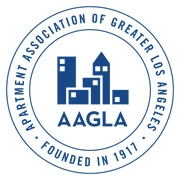Every home has a history, including your rental house. The history of your rented home can reveal fascinating facts about its past, such as former owners and architectural changes. Regardless of whether you live in an old brownstone, a mid-century apartment complex, or a newer rental, the walls do have stories to share. Learning them can make you feel more at home and give you insight into the property’s development.
The Walls Remember More Than You Do
Apartments and houses see several lives enter and exit. Some may have started families there, others may have built careers, and some may have left some trace of their having lived. Peeling the layers of time can illustrate how the place has changed and what forces made it the house that it presently is. In some cases, surprise findings during remodeling—such as newspapers blown into walls as insulation or hidden crawl spaces—can provide even more insight into the property’s history. However, when searching for a rental with such a rich history, it’s crucial to be aware of common rental scams. Deceptive listings, fake landlords, and misleading lease agreements can turn a promising home into a costly mistake. Always verify ownership, check reviews, and be cautious of deals that seem too good to be true.
Where to Start Your Research
Start with public records. Cities keep extensive records on properties, such as ownership history, renovations, and zoning amendments. County tax records, property deeds, and historical records may provide helpful information. Local libraries or historical societies typically have resources that allow you to glance back decades, even centuries. Your local preservation board might have additional records or even old photographs chronicling how the house has changed over the years if your rental is in a historic district.
Clues Hidden in Your Lease
Leases won’t always paint the entire picture, but they can provide information about past tenants or changes to the property. If your lease has a history of repairs or property alterations, such information can yield hints about significant past events. Ask your landlord if they have any information regarding the former tenants or major renovations. In some cases, landlords or property managers might have obsolete blueprints or records showing how the building changed over the years. Even subtle clues, such as an oddly placed light switch or a door that opens into nothing, can be an indication of past alterations that have reconfigured the floor plan of the home.
Talking to Long-Term Neighbors
There are not many resources as valuable as long-term neighbors. Individuals who have been around for years tend to have first hand stories about past tenants and events. They may recall unusual renovations, former businesses operating out of the property, or even local folklore about your rental. If you’re comfortable, introduce yourself and ask if they remember anything interesting about your home. Even casual conversations can reveal fascinating tidbits, such as a past tenant’s peculiar habits or a notable event that happened on the property. These insights can also highlight the importance of staging when preparing a rental for new occupants. A well-staged home not only enhances its appeal but also helps potential tenants envision themselves living there, creating a fresh start while respecting the property’s past.
Signs Your Home Has a Rich History
Some homes reveal their history through design details. If your apartment has original crown molding, fireplaces, or antique tiles, it may be over a century old. Wallpaper remnants behind a cabinet or multiple paint layers can hint at past residents’ styles. Stained glass, woodwork, or specific flooring types may suggest the era of construction. A garden or backyard might also hold clues. Old walkways, buried objects, or unusual landscaping could reflect past trends or uses.
Looking Up Old Newspaper Mentions
Most newspapers keep archives of property transactions, police calls, or newsworthy incidents that occurred at an address. Online databases or microfilm files at libraries can be utilized to find out whether your rental has ever been in the news. If it was used for any purpose other than as a dwelling, i.e., as a shop or public meeting space, these archives may contain surprising revelations. Some homes have been reconverted from old schools, hospitals, or even hotels, with decades of history within their walls. Being able to find an old newspaper story on your home can provide an additional way you look at your home.
The Ghosts of Rentals: Myth or Reality?
Some older rental homes do come with ghost stories. You might or might not believe in the supernatural, but some renters have experienced strange events in their homes. If your rental has a haunted reputation, local legends or old news stories might be to blame. Even in the absence of any ghosting, the idea that previous residents once dwelled in your space might make you look at it differently. If your home is particularly old, there might be myths about past residents, strange occurrences, or unexplained events. Researching these can add some excitement or intrigue to your rental existence.
Renovations That Changed Everything
Many rental homes go through extreme renovations. If walls have been removed or staircases altered, the property might not look anything like it did decades ago when it was first built. Some homes were once single-family homes that were then converted into multi-unit apartments. Researching building permits can tell you what has been done over the years. There can also be vestiges of the previous life tucked away in older homes, such as boarded-up windows or old fixtures not removed in out-of-the-way places. Being aware of these changes can assist you in understanding the layers of history that exist in your home.
Personalizing Your Home Without Sacrificing Its History
It is feasible to make a house a home even in a rental. Attempt little changes in your home such as removable wallpaper or custom furniture configurations to help make it more personal. Understanding the history of your rented home, you can weave its past into your interior design for a unique blend of old and new. If your home was once a 1920s townhouse, choosing period-style furniture can nod to its history while still permitting you to claim it as your own. Finding a way to bring in modern elements without destroying the history of your area allows you to create a living area that not only feels like home but also stands the test of time.
Discovering Previous Owners and Their Stories
If you want to go further, searching previous owners through census records or genealogy sites might yield some fascinating facts. Some would have been local business owners, politicians, or artists. You might even, in certain cases, find a celebrity who once lived in your rental house. That kind of investigation can add character to the history of your house. If you can find former tenants, they might be more than happy to provide you with firsthand information. They might have some old photographs of the house, which can give you a better insight into how the structure has evolved over the years. Additionally, they can share their common tenant complaints, helping you identify recurring issues such as maintenance delays, noise problems, or hidden fees.
The Relevance of The History of Your Rented Home
Learning the history of your rented home can help you appreciate the space you are living in even more. Learning the history levels, makes you feel more settled. Your rental is not a temporary residence—it’s a building with a history that’s still growing with every new inhabitant. Whether you find out that your home once belonged to a celebrity or was part of a historic district, knowing this can add a certain depth to your living experience.









